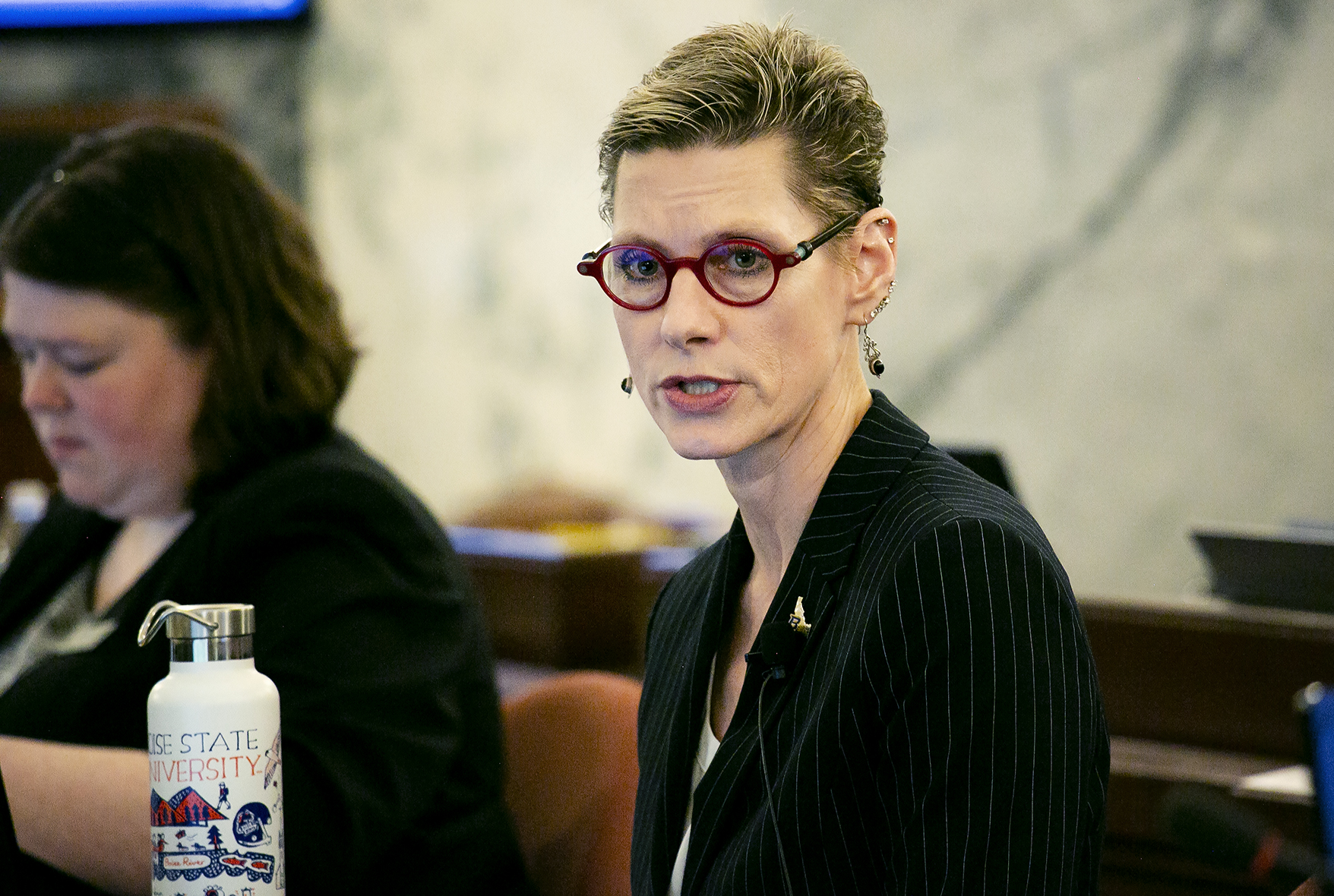President Marlene Tromp touted Boise State University’s commitment to innovation — even when it comes to cutting budgets.
But there are limits, Tromp told legislative budget-writers Friday morning. Tromp said she is worried about maintaining the course offerings students need to graduate within four years.

“I’m not sure we can face another budget cut and still keep those courses intact for our students.”
Tromp’s budget presentation — her first as Boise State’s new president — capped a week of “Education Week” hearings in the Joint Finance-Appropriations Committee. It will be several weeks before JFAC tries to write up a higher education budget. But Tromp’s comments help frame JFAC’s decision, as she talked about juggling student needs against budget realities.
The state’s largest four-year institution, Boise State’s enrollment reached a record 26,272 students this fall, or about a third of the students in Idaho’s higher education system. As Boise State attracts students to campus, the challenge is keeping them on track.
- “The reason many students stop out is money or math,” Tromp said. She urged lawmakers to continue funding the Idaho Opportunity Scholarship — Gov. Brad Little wants to backfill $7 million of one-time scholarship money to make it a permanent line item. Meanwhile, Tromp said Boise State is trying to remake its math programs, moving away from non-credit remedial classes to for-credit courses students can put towards a degree.
- Seventy-nine percent of Boise State students return for their second year on campus. But that retention rate has dropped slightly over the past two years. For low-income students, eligible for federal Pell grants, the retention rate is 71 percent.
- Boise State’s graduation rate is trending upward; nearly 50 percent of students receive a degree within six years of enrolling. Since Boise State serves an older demographic — its average student age is 26 — many students are balancing classes with work and family commitments. “But we are still striving to improve our rate,” Tromp said.
Tromp also sees some other opportunities.
This fall, Boise State will launch a rural pilot program in Payette, McCall and Mountain Home — sending faculty into communities at the start and the end of the semester and stationing support staff in the communities full-time. The goal is to help rural students stay on track as they take hybrid courses.
Boise State hopes to expand the program into three new communities each year. If it works, Idaho could emerge as a national leader in serving rural students, Tromp said. “The nation has underserved our rural students.”
While Little’s budget includes a few line items for higher education — the Opportunity Scholarship proposal and $1 million to launch a joint cybersecurity major — the overall budget is virtually flat. Little has proposed just a 0.4 percent increase in general fund spending at the state’s four-year institutions.
The four institutions have also been ordered to cut their budgets by 1 percent this year and 2 percent next year. For Boise State, the cuts will come to more than $3.1 million.
Budget realities have forced Boise State to be “more innovative and more thoughtful,” Tromp said. For example, Boise State’s library moved several journal subscriptions to a pay-per-use plan, using the savings to hire a staffer who will work to expand the library’s open-source catalog.
But Tromp didn’t downplay the challenges. “It’s never easy to face a budget cut.”
A somber assessment of the ’60 percent goal’
After Tromp wrapped up her presentation, State Board of Education Executive Director Matt Freeman offered a sobering update on Idaho’s signature education goal.
Idaho wants 60 percent of its young adults to hold a college degree or a professional certificate. For years, Idaho has been stuck at 42 percent, and its postsecondary completion numbers remain among the lowest in the nation.
Freeman tried to put the stagnant numbers into perspective. He said the 60 percent goal reflects Idaho’s population, not Idaho’s graduation rates. In other words, he said, the State Board cannot control the number of adults who move into the state for a job — or move out to take a job elsewhere.
At its February meeting, the board will set other metrics that are within its control. The board will come up with specific graduation goals for each college and university.
The State Board first established the 60 percent goal in 2010. Since then, the state has moved its target date from 2020 to 2025 — and even the revised deadline could be unrealistic.
In response to a question from Rep. Caroline Nilsson Troy, R-Genesee, Freeman conceded that the budget cuts could make it more difficult for Idaho to meet its college go-on and completion goals, putting more pressure on a new wave of college and university presidents. “They’re going to have to figure it out. … They know the customer they serve, and it’s the student.”
But Freeman also emphasized a recurring theme from “Education Week:” the presidents’ collective commitment to put collaboration ahead of self-interest.
“This week you heard unprecedented solidarity among the university presidents,” he said. “It’s the real deal.”
